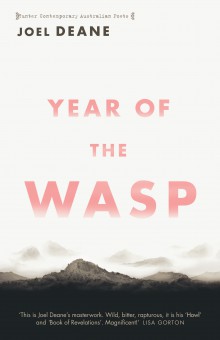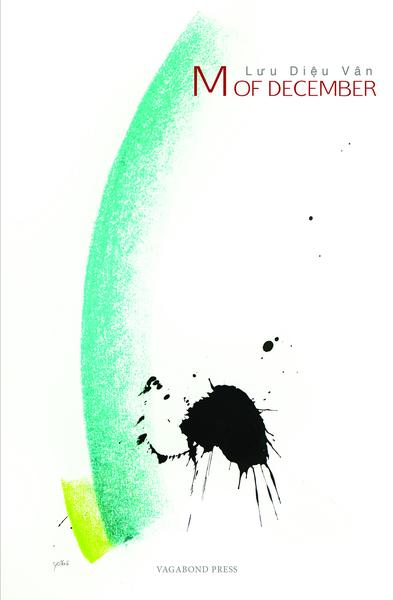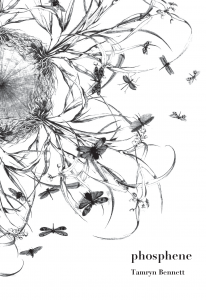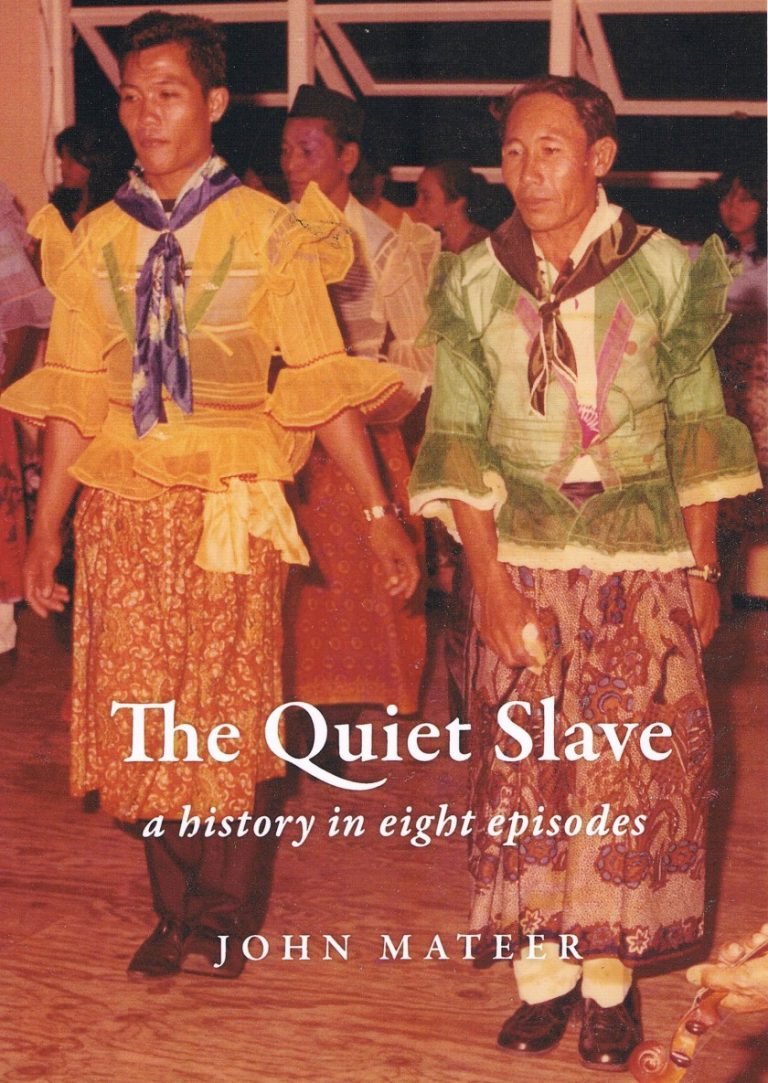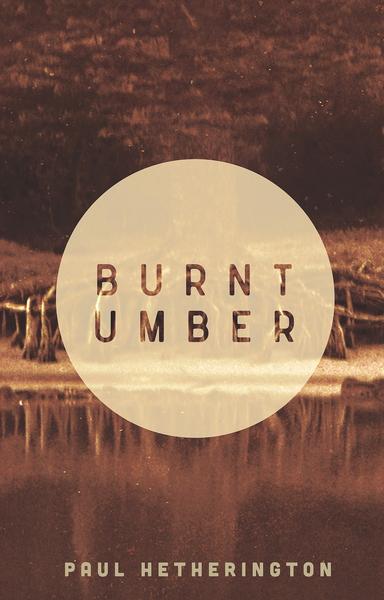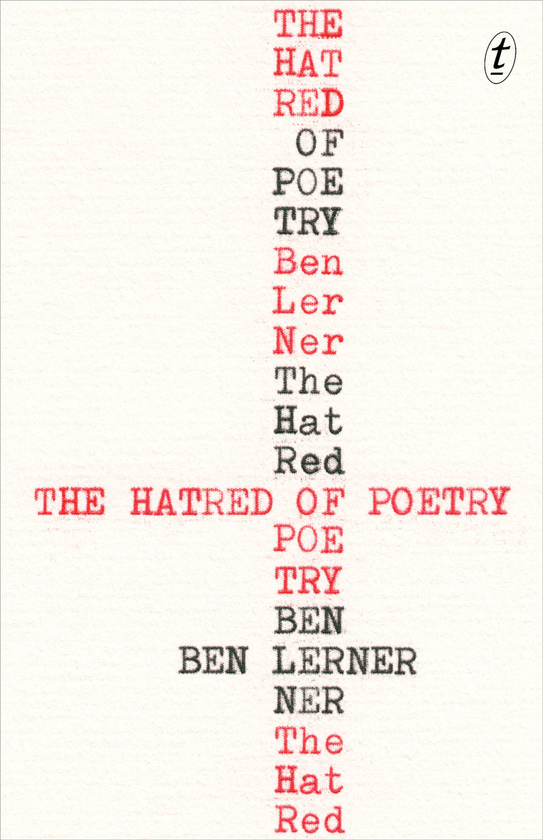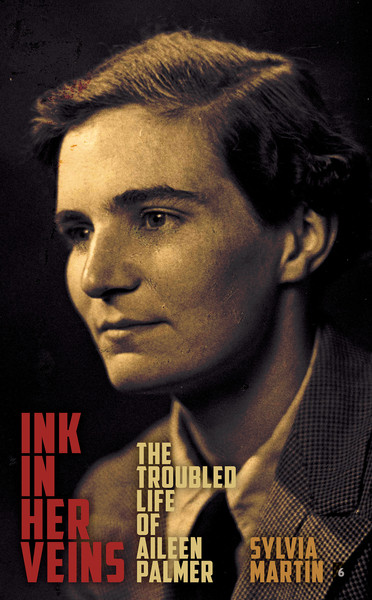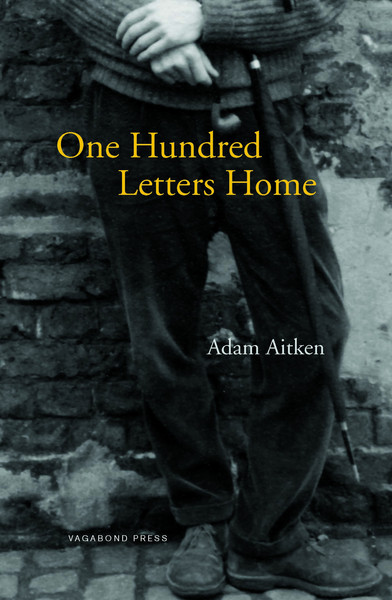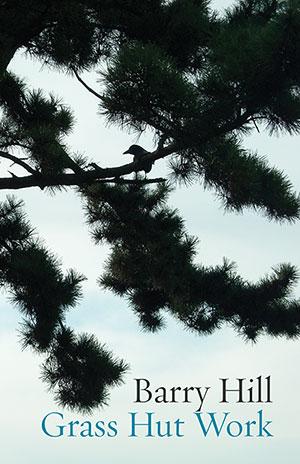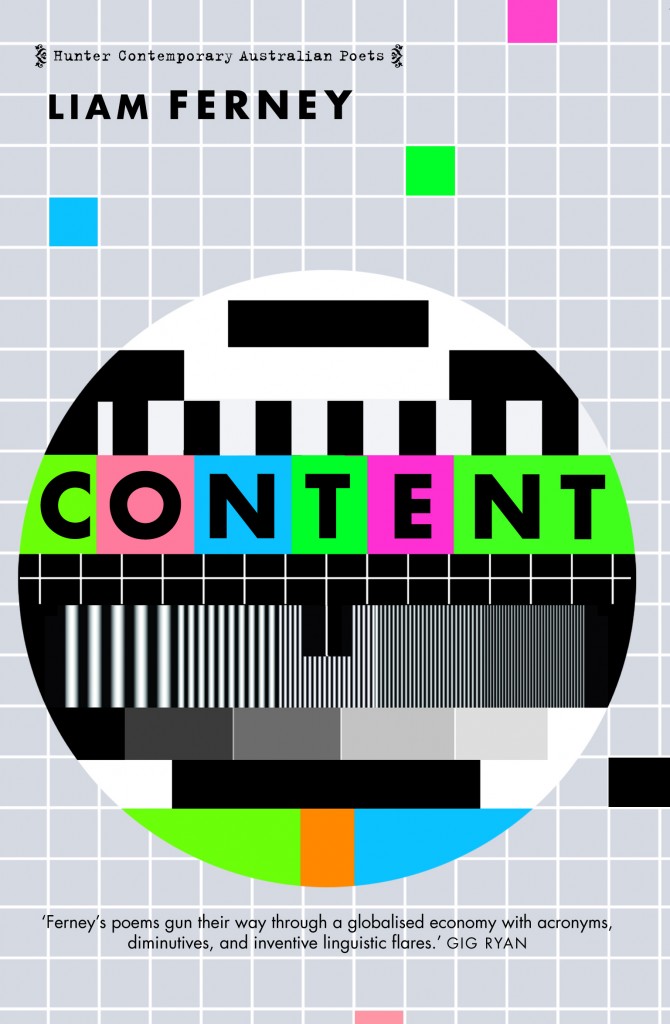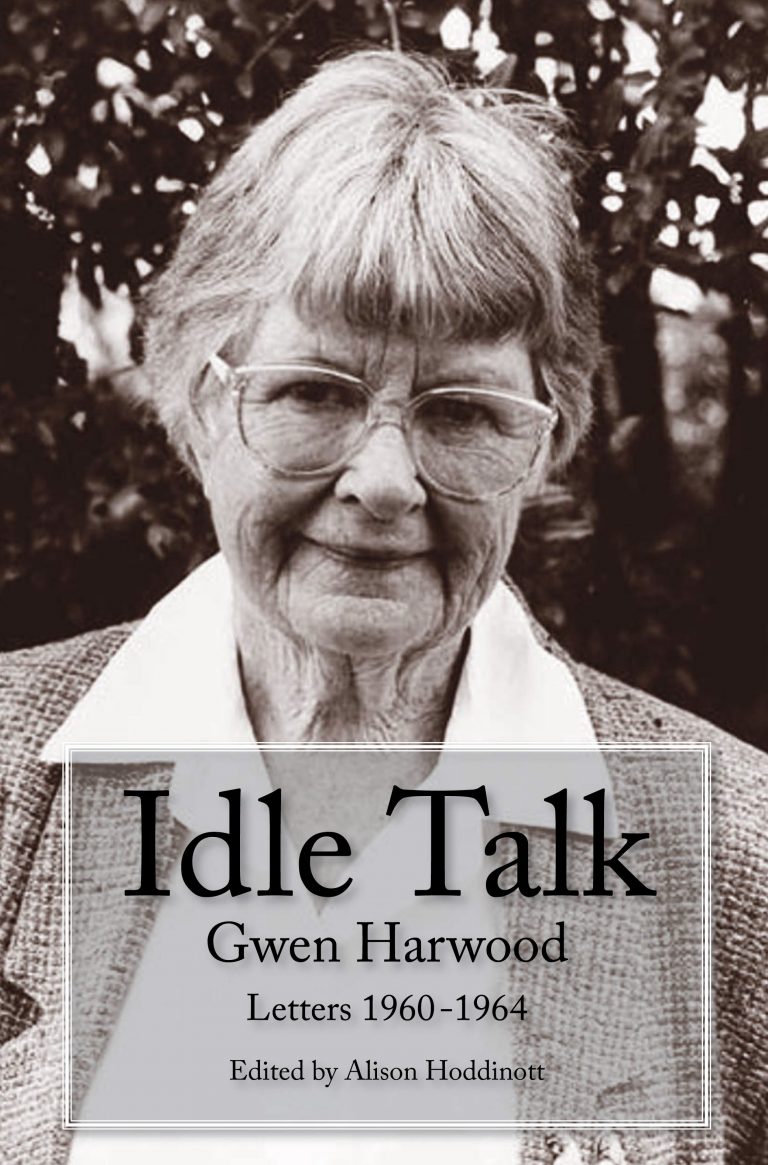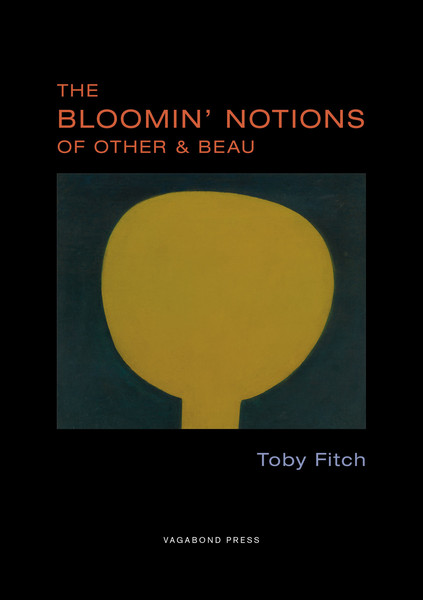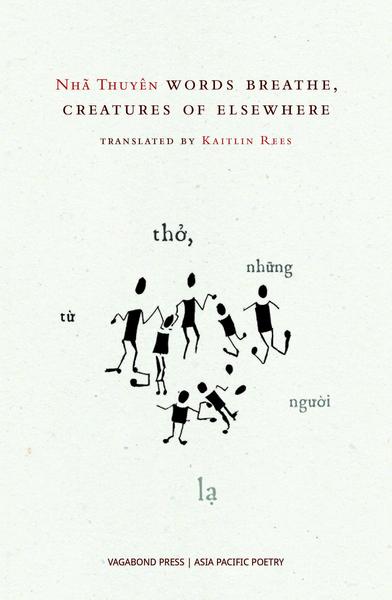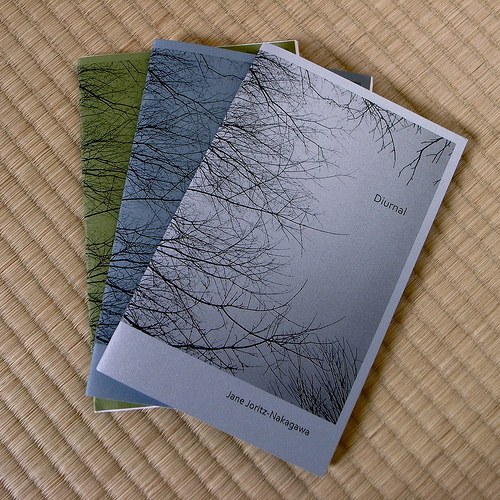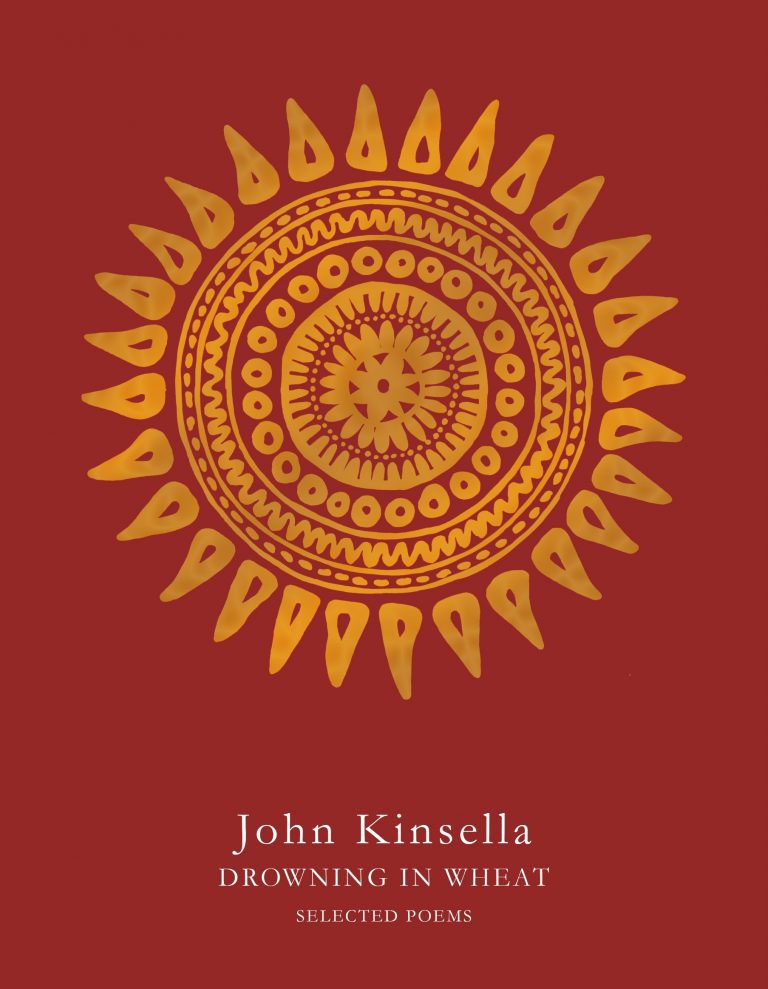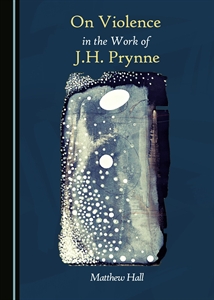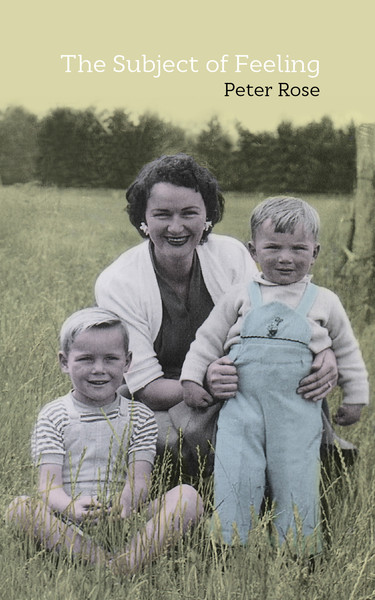BOOK REVIEWS
Review Short: Joel Deane’s Year of the Wasp
As a literary work in and of itself, Year of the Wasp reads as a volume of rare, terrifying beauty; beguiling as it guides the reader through an ordinary series of events in an ordinary series of settings. Reading Joel Deane’s third volume of poetry with the biographical insight that the author recently suffered a stroke provides additional complexity, and a kind of lucidity.
Lucy Van Reviews Little Windows 1 with Jill Jones, Andy Jackson, Alison Flett and John Glenday
The full set of LW1 arrives in the post like a present, a gift-wrapped bundle of square, slate-coloured books. It came to me looking so perfect, that a couple of days passed before I had the heart to a prise a chapbook from under the clear binding ribbon. This situation gave shape to a thought about the necessity of obstruction in order for words to seduce. Some form of this theory of desire continued to occur to me as I read the books’ divergent visions.
Jennifer Mackenzie Reviews Lưu Diệu Vân
Reading M of December is rather like going to a spectacular exhibition at a gallery where images of all kind swirl, proclaim, collide and re-form – the viewer takes the opportunity of a brief leave to attempt to come up with a coherent response. Having gone into this gallery, and exited on a number of occasions, what I have come up with is a response to the formed fragmentation of its individual poems, travelling through discordancy via the robust vigour of forceful lines and sharp elisions.
Alice Allan Reviews Lisa Brockwell and Tamryn Bennett
Lisa Brockwell’s Earth Girls and Tamryn Bennett’s phosphene are both compelling first collections in their own right. Reading them side-by-side, however, an equally compelling contrast emerges. Where Brockwell looks for clarity and direct engagement with her audience, Bennett invites interpretation, offering many clues and few concrete answers. This contrast reveals something else: the strengths of one approach do not threaten, or cancel out, those of the other.
Jennifer Mackenzie Reviews John Mateer
A defining scene in Pramoedya Ananta Toer’s historical novel, Arus Balik (Cross-currents), portrays the moment in 1511 when colonial power came to the Southeast Asian archipelago. In the following passage about the fall of Malacca, Pramoedya presents a society unaware (or ‘becalmed’ as Pramoedya puts it) of what is about to confront it.
Alexis Late Reviews Paul Hetherington
Artistically, burnt umber is an earthy shade intensified by heat. It is a colour synonymous with this country – familiar to anyone who has trekked through Western Australia, from where Paul Hetherington originally hails. In this collection, it is also a metaphor for memory, which, through the heat of feelings in the present, attains an intensity that overwhelms the original events.
Lucy Dougan Reviews Louise Nicholas
Louise Nicholas’s The List of Last Remaining very satisfyingly brings together a substantial body of her work. Its five, intelligently ordered sections each rise up to enact their shimmering, persuasive world and then fade out to make way for the next. As the author herself notes in the poem ‘Picture’, there is ‘something filmic’ afoot here.
Review Short: Timothy Yu’s 100 Chinese Silences
Recently I watched a program on the resurgence of Pauline Hanson. In one scene Hanson stands in her old fish and chip shop in Ipswich, Queensland, a business she sold to a Vietnamese Australian lady named Mrs Thanh. Hanson boasts of her hard work, and takes over the frying. Hanson proceeds to advise Mrs Thanh on how to make potato scallops fluffier.
Bonny Cassidy Reviews The Hatred of Poetry
Reflecting Ben Lerner’s considerable reputation as a novelist and poet, this essay speaks in a voice both sure and self-deprecating. At this level it has already fulfilled a conventional definition of its genre – the effort of rhetoric to explore an idea or problem. The problem that Lerner considers – why is poetry a subject of hatred? – is hardly urgent, and he is quick to admit this. After all, the essay’s topic is an inverted defence of poetry, a tradition with a long history. The pleasures of this contribution, therefore, are Lerner’s unashamed and confident belief in poetic form, and the sympathetic truth to be found in his conclusions.
Caitlin Maling Reviews Ellen van Neerven
Poems about food, such as those comprising Ellen van Neerven’s first collection Comfort Food, are often framed in terms of ideas of connection, community, and commonality. Van Neerven engages directly with these ideas, but emphasises their fault lines as much as their strengths. The poem I keep returning to appears early in the second of the book’s six loose sections.
Phillip Hall Reviews Maggie Walsh
Maggie Walsh is a Bwcolgamon woman from the First Nations community of Palm Island, a tropical paradise located in the Great Barrier Reef only sixty-four kilometres northwest of Townsville. But this is a paradise with a troubled history since European settlement – with a lack of jobs and housing, and a tragic reputation for violence and disadvantage. In 1999, for example, the Guinness Book of Records named Palm Island as the most violent place on earth outside of a combat zone.
Phillip Hall Reviews Ink in Her Veins: The Troubled Life of Aileen Palmer by Sylvia Martin
This biography is another powerful testament to the tragedy of difference. Sylvia Martin writes of an idealistic creative pragmatist who was victimised for her gender disphoria and, while loved, never accepted. Aileen Palmer is yet another outspoken and independent woman hounded to the mental hospital and shock treatment.
Review Short: Adam Aitken’s One Hundred Letters Home
It has taken me more than a hundred days to read Adam Aitken’s One Hundred Letters Home. The book arrived in my letterbox in Sydney at the beginning of May. Autumn turned into winter, and the fragments of Aitken’s palimpsest-memoir started to unfold themselves to me.
Review Short: Liam Ferney’s Content
Liam Ferney’s Content is a book of poems largely composed out of memes, or slices of culture. The notes at the back of the book state: Some of these poems contain allusions, sentiments, words, phrases, sentences and images that have been lifted from the culture. And Cordite’s comments. If you’re not sure, Google it. At this stage your guess is as good as mine.
Review Short: Gwen Harwood’s Idle Talk Letters 1960-1964, edited by Alison Hoddinott
The letters in this illuminating and entertaining volume, written by Gwen Harwood to her friend Alison Hoddinott (the collection’s editor) and her husband Bill Hoddinott, cover the period leading to the publication of Harwood’s first book of poems. 1960-1964 were the years in which Gwen Harwood’s poetry was coming to light in literary magazines in Australia, sometimes under her own name, sometimes under one of her three nom-de-plumes: Walter Lehmann, Francis Geyer and Miriam Stone.
Erin Thornback Reviews Chris Edwards and Toby Fitch
Chris Edwards’s O Sonata dwells in the vortex of the underworld, plumbing the depths of the Orpheus and Eurydice myth and resetting the entrails of Rilke’s Sonnette an Orpheus into a crossword puzzle ready for consumption. In the eponymous sequence, Edwards offers up a renewal of the Orpheus (also known as ‘the futile male’) myth to signal his reconsideration of repetition and originality as the basis of a literary revision – releasing a suite of renditions that purposely misinterpret, transliterate and obscure.
Review Short: Rose Lucas’s Unexpected Clearing
In ‘Balancing,’ Rose Lucas describes how Philippe Petit, the French high-wire artist made famous by his walk between the Twin Towers of the World Trade Center, ‘launched into a fitful middle space.’ With a ‘steady grip of muscle,’ Petit is imaged as a ‘machine riding air and sky,’ defying gravity as he dances ‘from element to element.’
Review Short: Nhã Thuyên’s words breathe, creatures of elsewhere
The relation of place to identity and self-making is central to much poetry, indeed to writing more generally. It won’t be lost on the reader, therefore, that Nhã Thuyên, writing from Hanoi (‘river within / inside’) – a city built on lowlands; a city of lakes situated in the Red River delta, where rainfall is high – makes an impassioned plea for poetry (and thinking) that is fluid, unbounded, borderless.
Review Short: Jane Joritz-Nakagawa’s Diurnal
Jane Joritz-Nakagawa’s Diurnal is a slim chapbook of 24 numbered poems of seven two-line stanzas, which by my reckoning makes it a sonnet sequence. The cover of the edition I received is reminiscent of silver gelatin, with stark tree branches visible in the glooming (the chapbook comes in a series of three colours). The image is evocative of the tone of the poetry and while the title evokes the daily, it suggests that there are long, dark days of the soul, as well as nights. What of the noir of the day?
Chris Brown Reviews John Kinsella
The poetry of John Kinsella will need little introduction in a forum such as this, though with the recent publication of his Drowning in Wheat: Selected Poems, aspects of Kinsella’s biography move more meaningfully into focus. Author of over forty books, Kinsella’s writing career spans three decades. What with the wealth of material available to him, Kinsella and his editors might have been spoilt for choice; though how to bring this wealth into a general coherence?
Simon Eales Reviews On Violence in the Work of J.H. Prynne
Violence and poetics are the key poles in Canadian-Australian critic and poet Matthew Hall’s new scholarly release. Hall charts how the British late-modernist poet, Prynne, responds to violent events of the twentieth and early twenty-first centuries – from the Holocaust, through apartheid, Chernobyl, and Australian colonialism, to Abu Ghraib. These affective sites of violence are linguistic, too: chapter two takes its subject as the ‘the sociolinguistic war’ which takes place under ‘the strain of economic factions and the reach of the multinational resource sector’.
Review Short: Cassandra Atherton’s Exhumed
Dazzling, vibrant and terribly witty, Cassandra Atherton’s Exhumed does not give itself over entirely to the horribly serious, gruesome images invoked by its title. Nor of course does it travel down to the desperate depths of its epigraph’s hero, Rosetti, who (in)famously ‘recovered’ the book of poems he had buried with his wife. Yet Atherton’s collection of prose poems is nonetheless morbidly fascinating and even darkly exhilarating, with some of the more raw, emotionally-fierce poems evoking similar queasy feelings in the twenty-first century reader, perhaps, as the nineteenth-century poet might have experienced recovering writings from the grave of a loved one.
Review Short: Peter Rose’s The Subject of Feeling
From the beginning of the latest work by Peter Rose, the reader is given the impression of an unfolding tableau or score, the creases and outlines of which to be generously shared. A sense of intimacy is engendered from the outset: we are let in on the scales and arpeggios that a musician practises, as if each poem, or note that it reaches, ‘might lead somewhere / or fail to ascend.’

